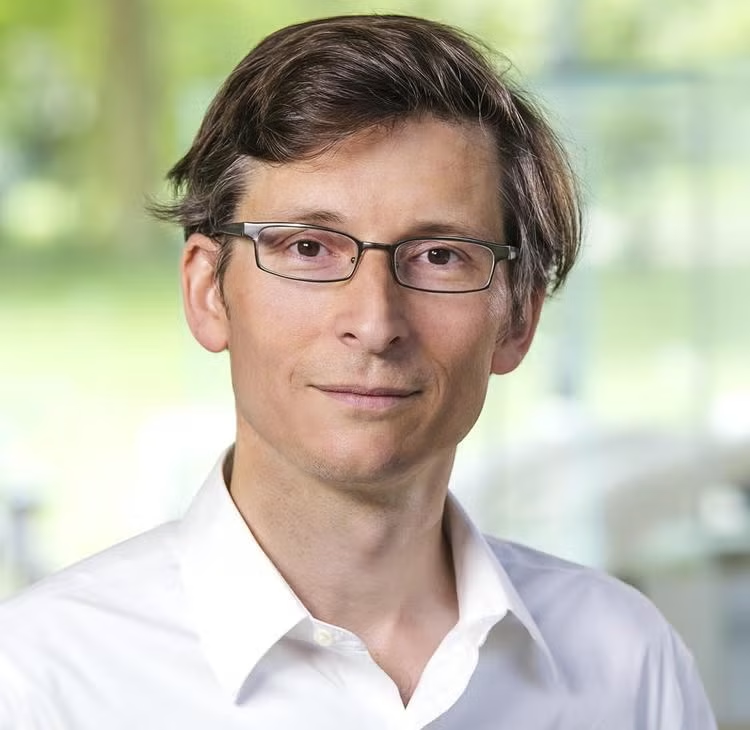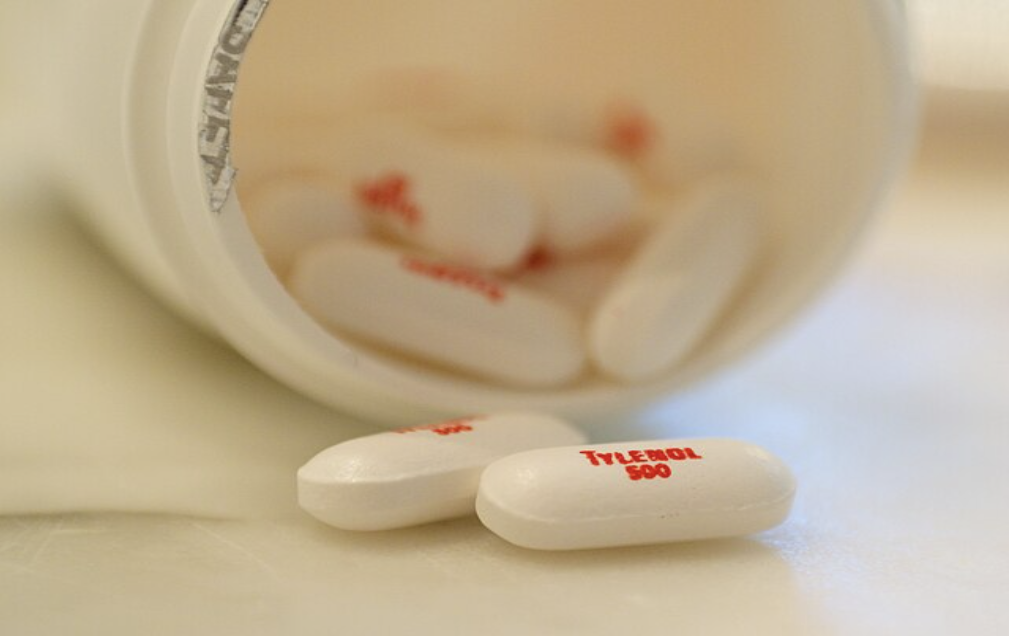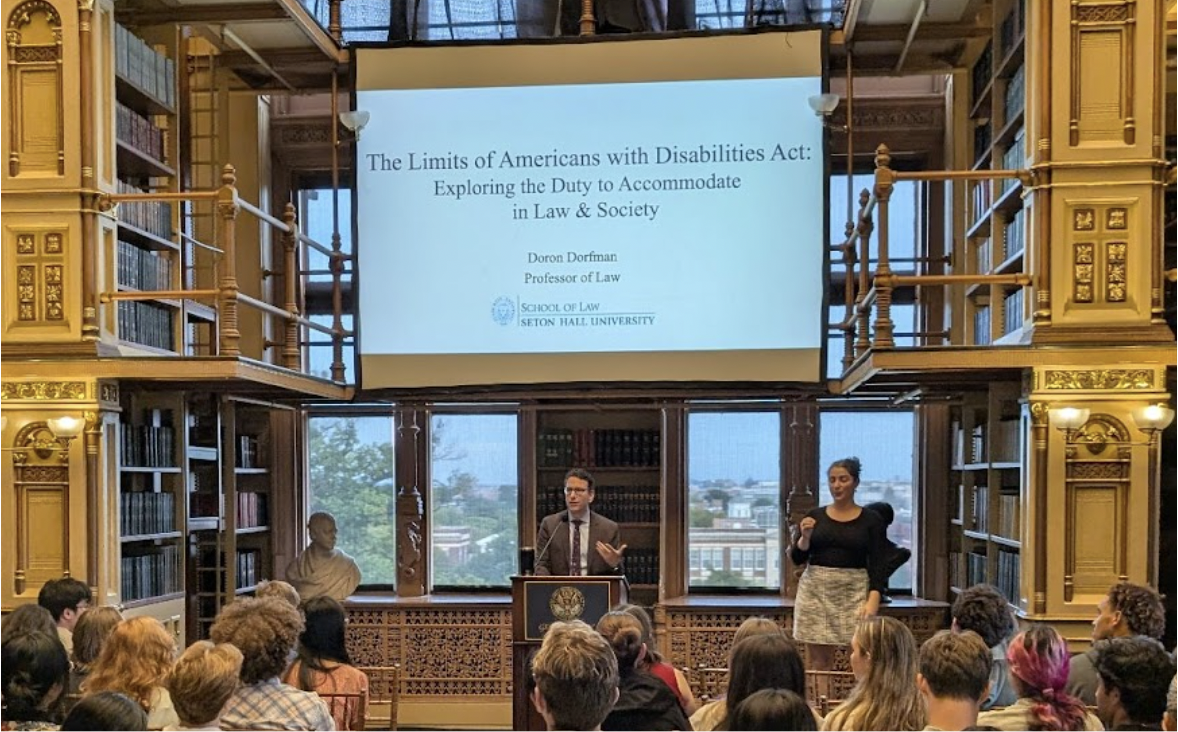Ian Bourg, associate professor of civil and environmental engineering at Princeton University, presented his new research on how common environmental pollutants, known as per- and poly-fluoroalkyl substances (PFAS), contaminate water, air and other biological substances at an ECoTalk on Sept 27.
Despite the specialized chemistry and physics of Bourg’s research, his work has many practical and interdisciplinary applications. Bourg said students should care about this research because water contamination can have many undesirable health impacts.
“We are trying to figure out how pollution moves around in the environment and what are the pathways through which we might get exposed to it,” Bourg told The Hoya.
Bourg researches the affinity of harmful PFAS chemicals for different locations and chemical phases within a molecular system. This distribution of chemicals is called partitioning. Through state-of-the-art computer science, Bourg analyzes the behavior of water, clay, air and pollutant particles when they interact with one another.
Bourg’s team was specifically interested in how PFAS chemicals interact with water interfaces, where water meets with another substance like clay or air. Understanding these crucial interfaces will illuminate how these contaminants move through the environment.
“Water near surfaces is acting in certain strange ways and is poorly understood,” Bourg said at the event. “Water in Antarctica is frozen, right? If you put a little grain of sand on your glacier, right at the boundary between your grain of sand and your block of ice, there will be a thin layer of water that actually remains liquid even at temperatures where it’s supposed to freeze.”
Bourg’s research found a correlation between PFAS location, specific contaminants’ chemical structure and other charged chemicals in the system. Specifically, Bourg found that water tends to “spit out” certain PFAS contaminants due to their nonpolar structure.
“So I can put an organic molecule in a system, and I can define some free energy that tells me the likelihood of finding the molecule at some location in the system,” Bourg said.
PFAS chemicals commonly make their way into the environment from manufacturing or chemical production facilities, household products and personal care items. Approximately 2,000 new chemicals, including some new PFAS compounds, are introduced to the U.S. market for purchase annually, according to the Department of Toxic Substances Control (DTSC). These chemicals can have a variety of health impacts on humans. Dr. Laura Shaheen, endocrinologist and health blogger, explained how these chemicals can result in fertility problems
“We know that these chemicals, largely untested on humans, affect the quality and production of eggs and sperm,” Shaheen told The Hoya. “Our country tends to release things and deal with the impacts later.”
This research is relevant not only to water contamination and its impact on our health but also to global warming. According to the European Union (EU), soil is Earth’s second-largest carbon sink following our oceans. Bourg’s research also seeks to explore the correlation between organic chemicals in soil and the ability of soil to absorb carbon dioxide from the atmosphere.
“If we know what the mechanisms are, then we could figure out how to change our land management practices to make our soils accumulate more carbon,” Bourg said.
A variety of undergraduate and graduate students attended the talk to discover more about current research in the field. Sneh Patel (GRD ’25), a master’s student in environmental and sustainability management, said the talk improved his understanding of organic contamination. He learned while working with the U.S. Environmental Protection Agency (EPA) that this was an issue of great urgency.
“During my time working with the EPA, I realized how important this issue is. This was more technical than the talks we usually hear, but due to my background in engineering, I was able to understand,” Patel told The Hoya.
Emanuela Del Gado, a professor in the physics department, also researches water and clay particles. Del Gado invited Bourg after discussing possible collaborations over the past few years. Del Gado explains that Bourg’s research is pushing the boundaries of science knowledge itself.
“The behavior of these materials are interesting to us because they touch questions at the frontier of current knowledge in physics—How does water behave when confined at the nanoscale and ions or various other molecules are dispersed in it?” Del Gado told The Hoya.
Bourg said he is excited to share his work with students and hopes they get involved with organizations that advocate for chemical transparency for consumers such as the Environmental Working Group. He hopes his research will create an impact to promote sustainability.
“It’s awesome to be a faculty in the U.S. who works on environmental issues because when you talk with students about all these things, you can feel their minds clicking; ‘Wow, this is not just depressing. We should do something.’” Bourg said.




